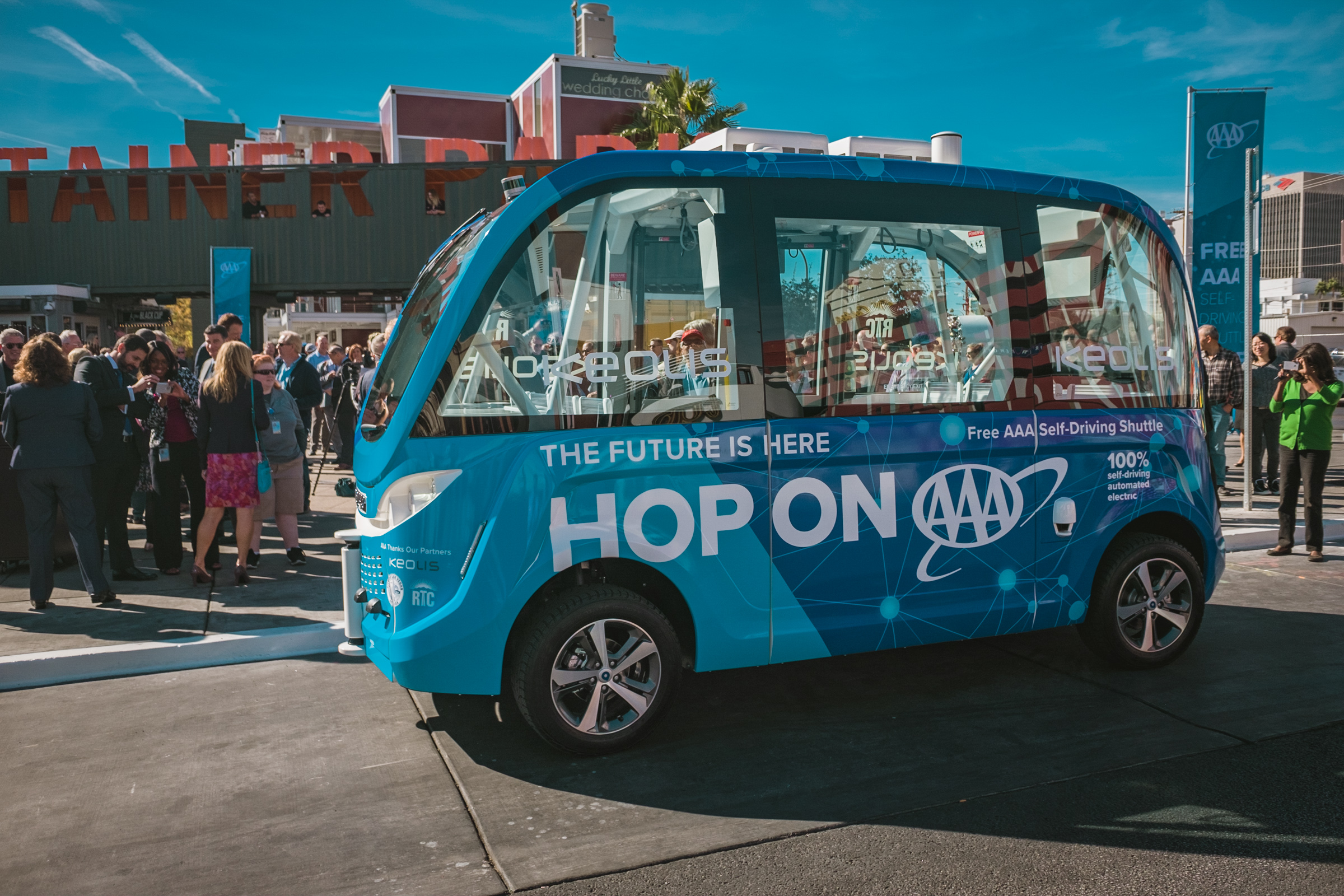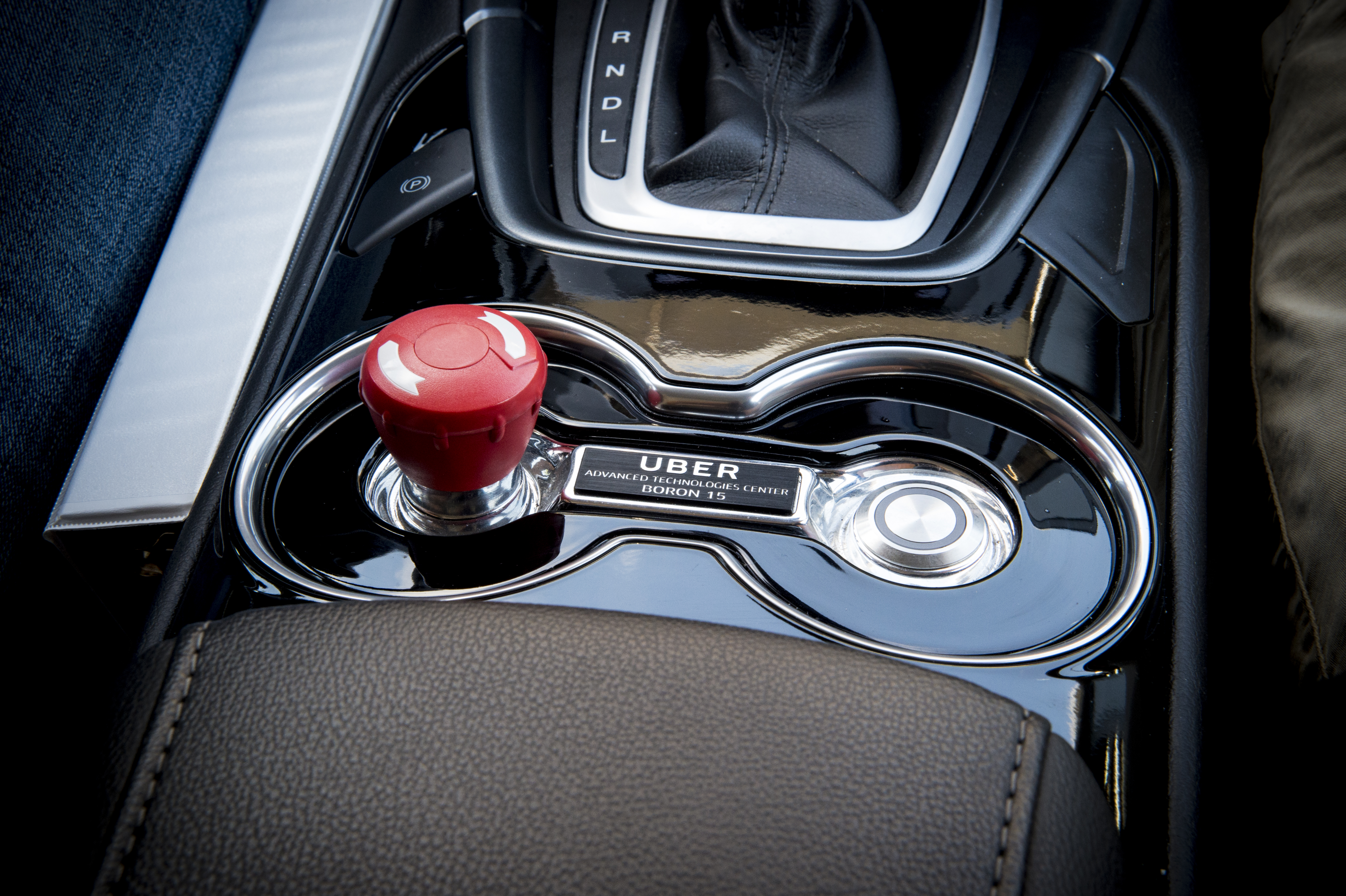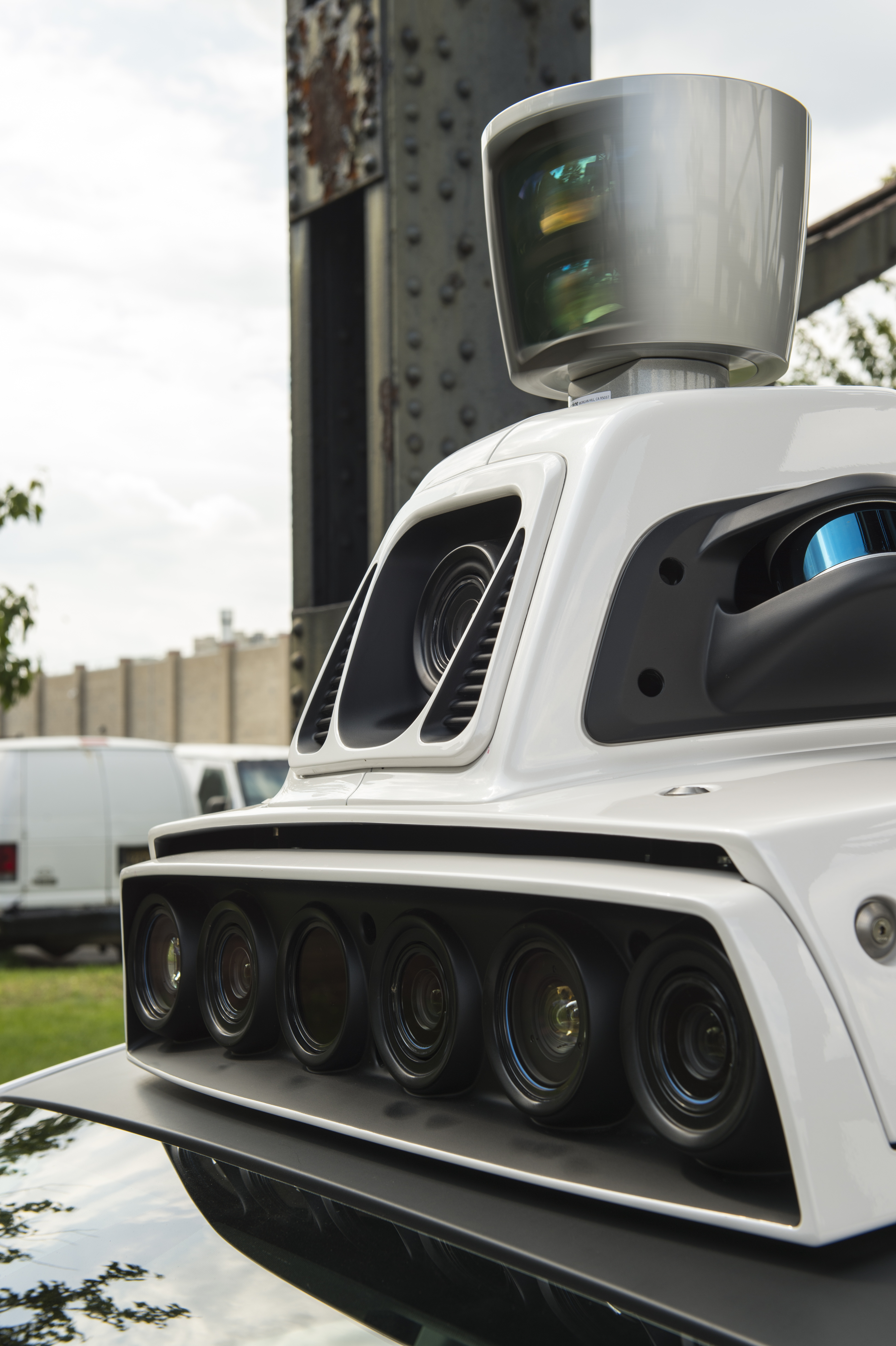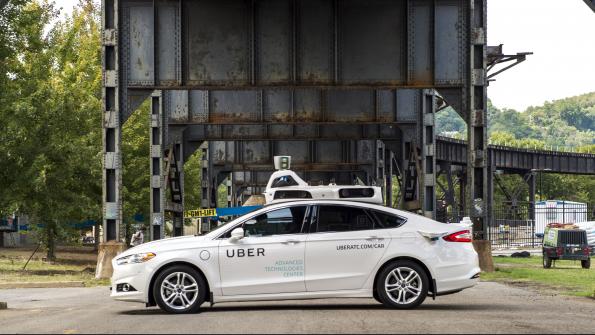The robo-car revolution
Unless you live in a major city, it’s pretty well accepted that to participate in modern society, you need car. Cars are how we commute to our jobs, how visit our friends and how get out of town for rest and relaxation. But what if this weren’t the case? What if our private vehicles were replaced by subscription-based fleets of driverless cars? What would that do to our cities, and what would that do to our lives?
Although it might sound like science fiction to some, this reality is on the horizon. The technology is already here, it’s simply a matter of how quickly we’ll see it spread.
Brooks Rainwater, senior executive and director of the Center for City Solutions at the National League of Cities, says the rise of autonomous vehicles is closer than we think. More than a handful of cities are already experimenting with integrating them into their traffic systems, and many others are planning now how their roads will look during the transition from driver to driverless.
“It’s fascinating how quickly these changes are coming about,” he says. “When we looked at long-range transportation plans for the largest cities in America two years ago, it was only about 3 or 4 cities that had explored what autonomous vehicles would look like. Now it’s up to 38 percent.”
As far as wheels on the road go, Rainwater says there are only a few cities where driverless cars are making their way through city traffic, but these early adopters are quickly becoming the models other cities should look to. “We’re seeing the testing play out in a few key cities,” Rainwater says, listing San Francisco, Pittsburg, Boston, and Chandler, Ariz., as the major players. “These are the indicators of where we’re going… This is happening, and cities need to prepare for it.”
While these changes are imminent, Rainwater says the shift won’t happen overnight. “I think what we’ll most likely see is a gradual shift from the on-demand vehicles being utilized now through Uber and Lyft and other companies transitioning to autonomous fleets,” says Rainwater. “I think that’s the first major shift we’ll see in large cities in the next three to five years.” As far as personal car ownership, Rainwater feels the transition will be slower, with expensive luxury vehicle manufacturers being the first to offer full-scale driverless capabilities at a premium, and as the technology becomes less cost-prohibitive, becoming more accessible to everyone.
However, there is a distinct downtick in interest in car ownership, particularly among urban-dwelling millennials, that will likely increase as autonomous vehicles become more popular. Rainwater says that for anyone, but in particular a young person living in a major city, car ownership is a major expense – and one that is increasingly being rejected. Buying into a subscription-based driverless vehicle service will likely be far cheaper than owning a car, and over the years, this will likely significantly drive down the number of cars on the road.
So why should cities be interested in this transition? Because it offers them opportunities to reshape the way their built environments look. “From a city perspective, where it gets really interesting, is when you get these shared-use autonomous vehicles on the street and integrating them with your transit system, and getting other vehicles off the street, there’s opportunity to recapture space for people in cities,” Rainwater says. “[We can] shrink streets, expand sidewalks, we can think about no longer building public parking garages and reutilizing the ones we have for other uses.” Space is extremely limited and critically valuable in cities, he says, and when we don’t have to use as much of it for cars – particularly parking them – interesting opportunities emerge.
Although this decline in privately owned vehicles is likely to occur over many years, cities should be planning for it now, especially in regards to how they fund infrastructure projects. With fewer cars on the road, and more manufactures shifting to eclectic vehicles, revenue from gas taxes will shrink, and cities will need to find better, more equitable taxation schemes. “We’re already starting to see a push towards more vehicle-miles-traveled taxes,” Rainwater says. “With more autonomous vehicles coming online they are becoming more relevant. We need to think about how we price our roads differently.”
Another disruption likely to occur is the way police departments are funded. Much of law enforcement revenue is generated through traffic citations, which will decrease sharply as driverless vehicles hit the road. Many departments – particularly smaller ones – will have to adapt to this change. “This could be a challenge,” Rainwater says, “but because the transition will play out slowly, I think there will be ways to reimagine what this rightsizing would look like over decades rather than years.”
Autonomous in Las Vegas
 Joanna Wadsworth, a Program Manager at the Transportation Engineering Division of Las Vegas’ Public Works Department, says driverless technologies are the logical next step in the evolution of our intelligent transportation systems, and one her city is looking to fully embrace.
Joanna Wadsworth, a Program Manager at the Transportation Engineering Division of Las Vegas’ Public Works Department, says driverless technologies are the logical next step in the evolution of our intelligent transportation systems, and one her city is looking to fully embrace.
Las Vegas partnered with Keolis, an international provider of passenger transportation services, who works with NAVYA, a French manufacture of autonomous vehicles, to bring a driverless shuttle to downtown Las Vegas.
In January, the city conducted a meticulously controlled 10-day pilot program using a driverless shuttle which ran for a 3-block loop in a dedicated lane, Wadsworth says. The purpose of the pilot program was to gauge public reaction to the technology and to see how advanced the technology actually was. “After that 10-day period, we were very impressed, and the public was very interested,” Wadsworth says. “We estimate that 10,000 people rode the shuttle during that period, and the most common question we received was “when is this going to be permanent?“”
Based on the success of the pilot, the program was expanded to move the shuttle into mixed-flow traffic and connect it to the traffic signals. Between January and November, the city worked with its partners to install dedicated short-range communication radios on the six traffic signals along the shuttle’s route. The free shuttle runs Tuesday through Sunday, 11 a.m. though 7 p.m., Wadsworth says. The shuttle itself seats 8 with seatbelts, with standing capacity available, and has an operator who monitors the operation of the shuttle itself while engaging with passengers.
While the program itself is still in its infancy, Wadsworth says the city is interested in long-term expansion and potential deployment of multiple shuttles along different routes in the city, integrating the driverless vehicles into already existing public transportation systems. These complementary services, Wadsworth says, is how she sees driverless vehicles being the most valuable to cities, at least in the near-term. “The driverless shuttles could potentially provide opportunities to be that first-last mile to our existing transit service,” she says. “Maybe in suburban communities it provides that connection to the high-demand transit stations or stops. Right now, we’re trying to plan for those future expansion opportunities.”
However, the pilot has not been without it’s hiccups. In November, the shuttle was involved in a minor accident when a conventional truck backed up into it. While the incident itself was negligible, it highlights potential problems cities will see in the future as divers begin sharing roads more frequently with autonomous vehicles. Wadsworth is optimistic that these sorts of accidents will not make people mistrustful of driverless technologies, but will rather drive its adoption even more.
Simply put, driverless cars are safer than manned vehicles. They are more predictable and will not deviate from the rules of the road. “I’m hoping that by having driverless vehicles on the road it will make vehicles with drivers more aware and alert,” Wadsworth says. The increases in safety, she says, will help people get over their trepidation of getting into a driverless vehicle.
Chris Pauly, NAVYA’s director of business development for North America, says this trepidation is an important obstacle to clear, and one of the most valuable aspects of the Las Vegas program is it’s giving people a taste of this technology. “It really is the first long-term deployment of autonomous vehicles in the U.S.,” he says. “We’re excited because its giving us an idea of what people think of autonomous vehicles. There’s a lot of learning that’s going to come out of this deployment.”
One thing Pauly says they are learning through this partnership is that people’s comfort with driverless technology comes down to education and familiarity. “Part of it is being educated to understand how the vehicle works and what it can do,” he says, “and the other piece is actually getting on one.” Once a person has experienced a driverless ride, he says, their confidence in the technology will be bolstered.
Autonomous partnerships

One of the companies at the forefront of vehicle automation is ride-hailing giant, Uber. Justin Erlich, the company’s head of policy for autonomous vehicles and urban aviation, says Uber’s mission is to enable transportation and facilitate mobility across the country. “The way we think autonomous vehicles are critical to that goal is that they will help us provide mobility with a much higher level of safety than has ever been possible.” He says. “Roughly 95 percent of all [traffic] fatalities are due to human error, so we’re excited about the opportunities for AV’s (autonomous vehicles) to help save lives.” Additionally, Erlich explains, autonomy will reduce the cost per-mile of providing mobility, allowing autonomous fleets to expand and serve a greater number of individuals.
In order to get there, though, Uber has to partner with cities who are open to testing in this space. When selecting cites to test in, Erlich says it’s important that leadership be champions of innovation, and facilitate a welcoming regulatory environment for testing. Pittsburgh and Phoenix were obvious choices, he says, because of their open attitudes. Additionally, infrastructure is important in determining where autonomous vehicles will be tested. Phoenix and its suburbs, he says, were great choices in this regard.
“Like any new technology there are some folks who will be super excited about it and look for opportunities to help deploy it, and there are others who are warier of new technologies and take a much slower approach,” Erlich says. “Obviously, you want to go to a community that welcomes this type of testing.”
As these programs mature, Erlich says they will likely evolve differently on a city by city basis. Ultimately though, he envisions a landscape where autonomous rideshare programs are part of a larger transit ecosystem, in some cases providing first and last mile services where the driverless vehicle is a multimodal solution, connecting more individuals with transit systems and their overall communities.
“Autonomous vehicles are picking up riders as we speak,” says Erlich. “To date we’ve launched over 30,000 passenger trips and we’ve logged over 1,000,000 autonomous miles.”
The driverless future
 In the distant future, Rainwater speculates that personal ownership of vehicles will diminish greatly. Some people will still own cars they operate, but insurance costs will become so prohibitive that driving might become something that only the wealthy would be able to do. As the number of vehicles on the road decreases exponentially, the way cities are organized begins to shift. “When it comes to what cities might look like, I think it’s incredibly exciting,” Rainwater says. “We have some cities that where upwards of 30 percent of the space is dedicated to streets and parking, so if you start to imagine being able to diminish those numbers… and allow more people to congregate, have more place-making opportunities, and re-activating cities for people – I think that’s what we all want.”
In the distant future, Rainwater speculates that personal ownership of vehicles will diminish greatly. Some people will still own cars they operate, but insurance costs will become so prohibitive that driving might become something that only the wealthy would be able to do. As the number of vehicles on the road decreases exponentially, the way cities are organized begins to shift. “When it comes to what cities might look like, I think it’s incredibly exciting,” Rainwater says. “We have some cities that where upwards of 30 percent of the space is dedicated to streets and parking, so if you start to imagine being able to diminish those numbers… and allow more people to congregate, have more place-making opportunities, and re-activating cities for people – I think that’s what we all want.”
Wadsworth foresees a future where municipal fleets are increasingly driverless. Vehicles like snowplows and street sweepers will know their routes increasing efficiencies and decreasing necessary man-hours. “I think there are a number of applications that could be used for the driverless technology,” she says. “As the technology develops it could be integrated into existing vehicles or new vehicles we haven’t yet thought of.”
Pauly agrees that there will be numerous municipal applications for autonomous vehicles, and predicts in the future we’ll see driverless public transit vehicles helping connect underserved neighborhoods to their greater communities. “Cities and towns will look to autonomous vehicles to fill in current public transportation gaps, he says. “rather than having to roll out a full transportation node to fill that gap, autonomous vehicles will be a great, flexible plug-in for those needs as they grow.”
“I think this will certainly be disruptive,” says Erlich. “Any transportation innovation has a dramatic impact from where cities sprout up to how those develop – we’ve seen this with trains and ships and cars, and we’ll see that with AVS as well… Just like the car represented independence and freedom in the 20th century, we’ll see AVs represent independence in and freedom in the 21st century.”
“We haven’t seen this type of rapid transition in the mobility space for a century – really since the invention of cars themselves – it’s an exciting time to be a part of and watch play out,” Rainwater says.
p.p1 {margin: 0.0px 0.0px 15.0px 0.0px; line-height: 22.2px; font: 15.0px Georgia; color: #323333}
p.p2 {margin: 0.0px 0.0px 15.0px 0.0px; line-height: 22.2px; font: 12.0px Georgia; color: #323333}
span.s1 {font-kerning: none}
span.s2 {font: 12.0px Georgia; text-decoration: underline ; font-kerning: none; color: #0e5f8b}
span.s3 {font: 15.0px Georgia; font-kerning: none}
_____________
To get connected and stay up-to-date with similar content from American City & County:
Like us on Facebook
Follow us on Twitter
Watch us on YouTube




















